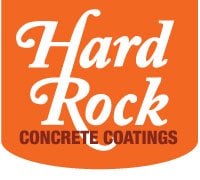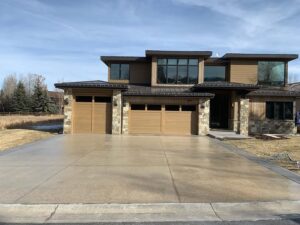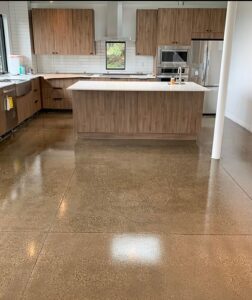Concrete is fairly hard and durable. Just ask anyone who has taken a fall onto some cement. However, concrete isn’t as tough as you think. Naturally concrete is very porous which means it absorbs almost any type of liquid that touches it (mostly water). This means that the water can then freeze and expand and cause cracks, splits, and damage to the concrete. Even in warmer climates where freezing isn’t a concern the porous nature of concrete leaves it susceptible to becoming brittle and chipping.
Research from major concrete authorities, including American Concrete Institute and National Ready Mix Concrete Association; confirm that most concrete damage is attributable to surface moisture intrusion. Additionally, untreated concrete can easily chip, break, or be damaged by other hard objects.
In the past, concrete has been protected by sealers ranging from wax to linseed oil. Today, high quality concrete sealers can be used to waterproof and protect cement. One of the most common concrete sealers is a concrete epoxy coating.
This type of coating is applied to protect the cement from surface damage, corrosion, staining, and absorbing moisture (waterproofing).
Epoxy sealers protect the concrete by creating an impermeable layer which prevents moisture and other harmful substances (like salt) from penetrating. This layer of concrete epoxy coating also adds strength to the cement and protects it from blunt force chips and damage.
Cement epoxy coatings have a very high level of performance and life span. They come in both oil and water based applications. The oil based applications are often used in shop floors, garage floors, restaurants, and homes. The water based epoxy applications are mainly used for concrete countertops.
When it comes to a concrete coating, the important thing is to protect the cement from all types of damage while maintaining beauty and safety. Concrete epoxy coatings can achieve this goal by keeping water and other harmful substances away from the cement.
Additionally, epoxy coatings can be made to be non-slippery to maintain safety and some colors and designs can also be used. For additional beautification, try utilizing a concrete acid staining method before applying the epoxy coating.



